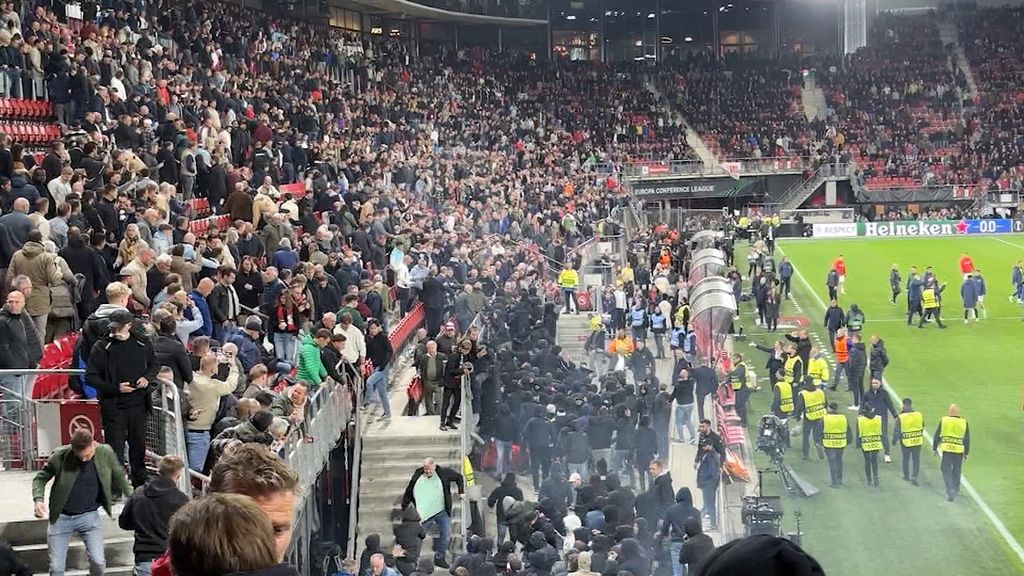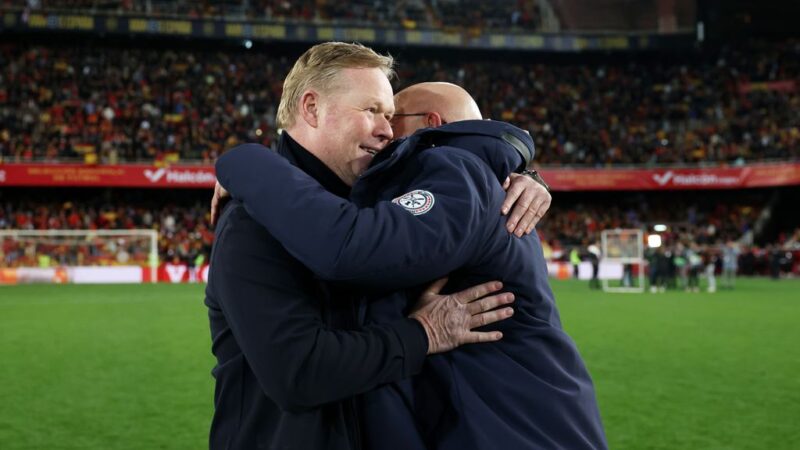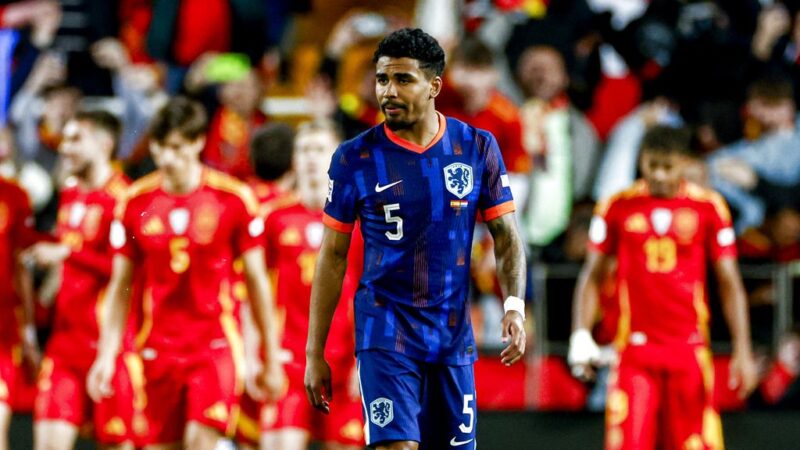Brits outraged and shocked at ‘awful scenes’ in Alkmaar

NOS News–
-

Arjen van der Horst
correspondent United Kingdom
-

Arjen van der Horst
correspondent United Kingdom
There has been an outcry in the United Kingdom over the storming of the main stand in Alkmaar by AZ supporters during the Conference League semi-final. In the supporters’ box were many relatives and friends of West Ham United players. British media described how players tried to intervene to protect their family members from the aggression of the AZ supporters.
David Moyes, the coach of West Ham United, reacted with shock. His father was in the section that was attacked by the AZ hooligans. “I can’t explain why this happened. Some of our players intervened because the attack was in the section where their family and friends were sitting. It certainly wasn’t the West Ham fans who were out for trouble.”
BBC commentator Alistair Bruce-Ball described the “awful scenes” just after the final whistle during the live broadcast. “Some fans dressed in black jackets and hoods run up the lower section of the stadium box to express their displeasure. It is getting out of hand. From a distance I can see that blows are being dealt.”
Listen for yourself here as BBC radio reported on the riots:
On social media and in British newspapers, a West Ham supporter nicknamed “Knollsy” was the focus of much attention. Video footage on Twitter showed him single-handedly stopping a horde of AZ fans. He suffered blows, but got away with bruises and some scratches. West Ham fans hailed him as a hero.
Joe Cole, former West Ham United midfielder and now sports columnist for the Daily Telegraph, attended the match. “It’s absurd, grown men attacking West Ham fans. Players were still trying to break them up. AZ Alkmaar fans throwing punches, it’s ridiculous. There were families in the box. Soccer is for everyone. That this still happens in the modern game is ridiculous.”
Cole calls on UEFA to intervene harshly. “For years English soccer was in a deep valley because of persistent soccer violence. We don’t see that in England these days. We haven’t experienced this in English stadiums for a long time. We still have a bad reputation, but we see this happening mostly in other European countries now.”
AZ supporters stormed the main stand:

AZ supporters storm head stand
Especially in the 1980s, soccer violence and hooliganism were known as the “English disease.” Matches in the English soccer league were regularly accompanied by disturbances and violence. English fans also had a bad reputation abroad. A visit of an English club to a European country was feared, because English hooligans often sought confrontation with the police and the opponent’s supporters. Supporters of the English national team were also repeatedly involved in riots abroad.
Heysel drama in 1985
This came to a climax at the Heysel drama in 1985. Liverpool played in the European Cup final against Juventus at the Heysel Stadium in Brussels, now called the King Baudouin Stadium. During the match, riots broke out in which Juventus fans went on the rampage. A total of 39 people were killed, including 32 Italians. English clubs were banned from European soccer competitions for five years as punishment.
Today it is rare for soccer violence to disrupt an English league match. In fact, English stadiums are so secure that spectators can sit close to the field without any partitions.
Starting in the 1990s, British authorities, in cooperation with clubs, took a series of measures to quell soccer violence. Fans who misbehaved were given severe penalties and long stadium bans. Alcohol was banned from stadiums. Smarter deployment of police and stewards combined with security cameras paid off. England was once an example of how not to do things, nowadays European clubs can learn from the English approach.





